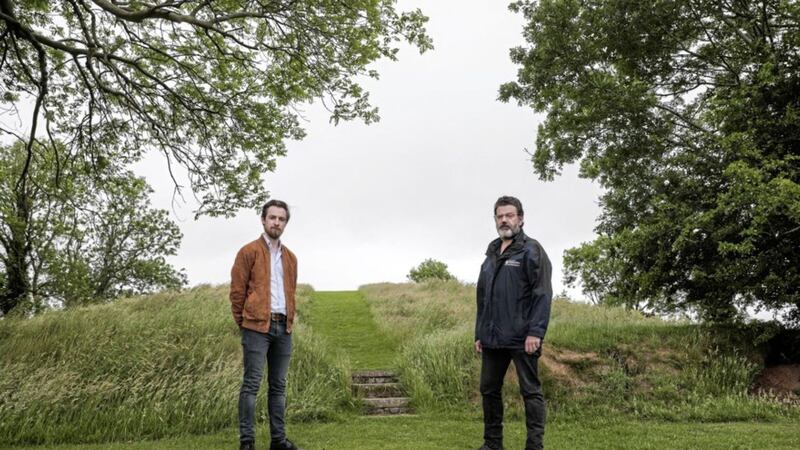ACADEMICS believe they have uncovered evidence of a series of monumental Iron Age temples and religious complexes at the ancient Navan Fort.
A team from Queen's University Belfast and the University of Aberdeen also located residences of early kings of Ulster from the medieval period.
Navan Fort in Co Armagh was, according to tradition, one of the great royal sites of pre-Christian Gaelic Ireland and capital of Ulaidh.
It was the seat of legendary kings including Chonchobhar mac Nessa, and provided the backdrop to the exploits of warriors Cú Chulainn, Conal Cernach and others in the saga Táin Bó Cúailnge/Cattle Raid of Cooley.
In addition to identifying the residences of early medieval kings, activity at Navan Fort is contemporary with the foundation of nearby Armagh City by St Patrick.
There have been several excavations which have unearthed many different buildings.
The new research was conducted in the form of a survey led by Dr Patrick Gleeson from Queen's.
Researchers measured the magnetic properties of the soil, which allowed them to map "buried archaeology" for which there is no above ground trace.
The survey gives a strong indication of the footprint and size of buildings that once stood on the site.
The results show a vast temple complex and ceremonial centre of prehistoric Europe, as well as the first evidence of continued medieval activity during the period when Navan Fort was associated with the kingship of Ulster.
"Excavation in the 1960s uncovered one of the most spectacular series of buildings of any region of prehistoric Europe, including a series of figure-of-8 buildings of the Early Iron Age and a 40m timber-ringed structure constructed c.95 BC," Dr Gleeson said.
"Upon the latter's construction, it was immediately filled with stones and burnt to the ground in order to create a massive mound that now dominates the site.
"Our discoveries add significant additional data, hinting that the buildings uncovered in the 1960s were not domestic structures lived in by kings, but a series of massive temples, some of the largest and most complex ritual arena of any region of later prehistoric and pre-Roman Northern Europe."
Dr John O’Keeffe, Principal Inspector of Historic Monuments in the Department for Communities, said the work "has shone new light on the monument, and will inform further research as we explore what Navan Fort meant to our forebears and how they used the site, for years to come".
"It provides additional insights that inform visits to this enigmatic monument and landscape today," he added.








